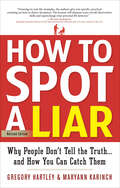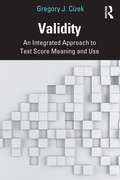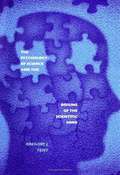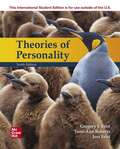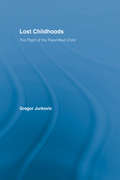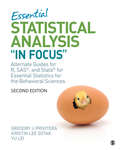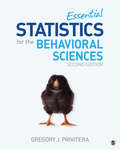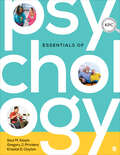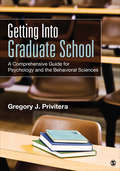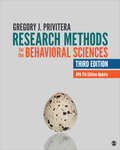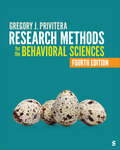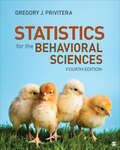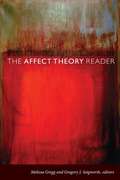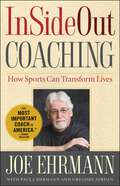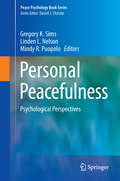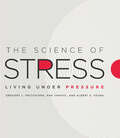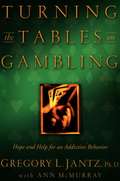- Table View
- List View
How to Spot a Liar: Why People Don't Tell the Truth . . . and How You Can Catch Them
by Gregory Hartley Maryann KarinchFrom a US Army interrogator, expert advice on how to ask questions, assess body language and facial expressions, to extract the truth from anyone.Have you ever been lied to? Of course you have, whether you knew it or not. Ever caught a spouse, business partner, parent, boss, or child brazenly lying right to your face? What if you could tell someone was lying, just by listening to them, and observing their action and behavior?How to Spot a Liar is the first book that gives you the tools to figure out what’s really going on: to gain the upper hand in salary negotiation, move a prospective client toward the outcome you desire, and find out why you need to end a business or personal relationship.Who needs How to Spot a Liar? Anyone with a cheating spouse or manipulative boss. Anyone conducting job interviews or cold-calling prospective customers. Lawyers who need to “read” witnesses or jurors. Anyone trying to survive the dating scene or faced with a string of business meetings with clients. Anyone who has teenagers at home or works on Capitol Hill. Anyone whose success and happiness depends on clear interaction with others. And anyone who wants to become just a bit more inscrutable, in business, life . . . even at the poker table!
Validity: An Integrated Approach to Test Score Meaning and Use
by Gregory J. CizekValidity is a clear, substantive introduction to the two most fundamental aspects of defensible testing practice: understanding test score meaning and justifying test score use. Driven by evidence-based and consensus-grounded measurement theory, principles, and terminology, this book addresses the most common questions of applied validation, the quality of test information, and the usefulness of test results. Concise yet comprehensive, this volume’s integrated framework is ideal for graduate courses on assessment, testing, psychometrics, and research methods as well as for credentialing organizations, licensure and certification entities, education agencies, and test publishers.
The Psychology of Science and the Origins of the Scientific Mind
by Gregory J. FeistGregory Feist reviews and consolidates the scattered literatures on the psychology of science, then calls for the establishment of the field as a unique discipline. He offers the most comprehensive perspective yet on how science came to be possible in our species and on the important role of psychological forces in an individual's development of scientific interest, talent, and creativity. Without a psychological perspective, Feist argues, we cannot fully understand the development of scientific thinking or scientific genius. The author explores the major subdisciplines within psychology as well as allied areas, including biological neuroscience and developmental, cognitive, personality, and social psychology, to show how each sheds light on how scientific thinking, interest, and talent arise. He assesses which elements of scientific thinking have their origin in evolved mental mechanisms and considers how humans may have developed the highly sophisticated scientific fields we know today. In his fascinating and authoritative book, Feist deals thoughtfully with the mysteries of the human mind and convincingly argues that the creation of the psychology of science as a distinct discipline is essential to deeper understanding of human thought processes.
Theories of Personality (7th edition)
by Gregory J. Feist Jess FeistThis introductory undergraduate text on personality theory uses clear language and an informal writing style, without oversimplifying the theories' original meanings. Underlying the text is the premise that personality theories are a reflection of the unique cultural background, family experiences, personalities, and professional training of their originators. The book begins with definitions of personality and the nature of theory. Subsequent chapters present twenty-three major theories, with biographical sketches of each theorist, related research, and applications to real life. The usefulness of each theory is evaluated on its ability to generate research, integrate existing empirical knowledge, and suggest practical answers to everyday problems. The theories' contributions to other fields, such as art, psychotherapy, and religion, are also examined. Learning features include chapter overviews, key terms and concepts, and a glossary. B&w photos, some from popular culture, add interest. This updated seventh edition has been reorganized, and there is new material on the Big Five trait theory. Jess Feist is professor emeritus at McNeese State University. Gregory J. Feist teaches psychology at San Jose State University. Annotation ©2009 Book News, Inc. , Portland, OR (booknews. com)
Theories Of Personality
by Jess Feist Tomi-Ann Roberts Gregory J. FestTheories of Personality provides a comprehensive foundation on the nature of personality theory, as well as its contributions to science. Coverage of each theory encompasses a biographical sketch of each theorist, related research, and applications to real life. Written by two preeminent psychology professors, Gregory J. Feist and Tomi-Ann Roberts, this program is engaging and student-friendly introduction to Personality Psychology.
Lost Childhoods: The Plight Of The Parentified Child
by Gregory J. JurkovicFirst published in 1997. Routledge is an imprint of Taylor & Francis, an informa company.
Essential Statistical Analysis "In Focus": Alternate Guides for R, SAS, and Stata for Essential Statistics for the Behavioral Sciences
by Yu Lei Kristin L. Sotak Gregory J. PriviteraEssentials of Statistical Analysis "In Focus" supports users of Gregory J. Privitera’s Essential Statistics for the Behavioral Sciences, Second Edition who work with a statistical program other than SPSS® or Excel®. Three standalone parts, each dedicated to R, SAS®, and Stata®, serve as step-by-step guides for completing the "In Focus" exercises in Privitera’s core text. A conversational writing style along with "To The Student" introductions allow students to familiarize themselves and become more comfortable with each program prior to making computations. Additionally, General Instruction Guidebook (GIG) sections for R, SAS®, and Stata® provide standardized how-to instructions for using each program, making the book a valuable reference for students beyond their studies.
Essential Statistical Analysis "In Focus": Alternate Guides for R, SAS, and Stata for Essential Statistics for the Behavioral Sciences
by Yu Lei Kristin L. Sotak Gregory J. PriviteraEssentials of Statistical Analysis "In Focus" supports users of Gregory J. Privitera’s Essential Statistics for the Behavioral Sciences, Second Edition who work with a statistical program other than SPSS® or Excel®. Three standalone parts, each dedicated to R, SAS®, and Stata®, serve as step-by-step guides for completing the "In Focus" exercises in Privitera’s core text. A conversational writing style along with "To The Student" introductions allow students to familiarize themselves and become more comfortable with each program prior to making computations. Additionally, General Instruction Guidebook (GIG) sections for R, SAS®, and Stata® provide standardized how-to instructions for using each program, making the book a valuable reference for students beyond their studies.
Essential Statistics for the Behavioral Sciences
by Gregory J. PriviteraEssentials of Statistics for the Behavioral Sciences is a concise version of Statistics for the Behavioral Sciences by award-winning teacher, author, and advisor Gregory J. Privitera. The Second Edition provides balanced coverage for today’s students, connecting the relevance of core concepts to daily life with new introductory vignettes for every chapter, while speaking to the reader as a researcher when covering statistical theory, computation, and application. Robust pedagogy allows students to continually check their comprehension and hone their skills while working through carefully developed problems and exercises that include current research and seamless integration of IBM® SPSS® Statistics. Readers will welcome Privitera’s thoughtful instruction, conversational voice, and application of statistics to real-world problems. A Complete Teaching & Learning Package. SAGE coursepacks FREE! SAGE coursepacks makes it easy to import our quality instructor and student resource content into your school’s learning management system (LMS). Intuitive and simple to use, SAGE coursepacks allows you to customize course content to meet your students’ needs. . SAGE edge FREE! SAGE edge offers both instructors and students a robust online environment with an impressive array of teaching and learning resources. Study Guide With IBM® SPSS® Workbook Bundle the Second Edition with the accompanying Student Study Guide With IBM® SPSS® Workbook for Essential Statistics for the Behavioral Sciences. Guide for Users of R, SAS®, and Stata® Bundle the Second Edition with the accompanying Essentials of Statistical Analysis "In Focus". WebAssign® This title is available on WebAssign, allowing instructors to produce and manage assignments with their students online using a grade book that allows them to track and monitor students′ progress. Students receive unlimited practice using a combination of multiple choice and algorithmic questions, and are allowed unlimited access to this edition of the textbook in the same course at no additional cost. WebAssign provides instant feedback and links directly to the accompanying eBook section where the concept was covered, allowing students to find the correct solution.
Essential Statistics for the Behavioral Sciences
by Gregory J. PriviteraEssentials of Statistics for the Behavioral Sciences is a concise version of Statistics for the Behavioral Sciences by award-winning teacher, author, and advisor Gregory J. Privitera. The Second Edition provides balanced coverage for today’s students, connecting the relevance of core concepts to daily life with new introductory vignettes for every chapter, while speaking to the reader as a researcher when covering statistical theory, computation, and application. Robust pedagogy allows students to continually check their comprehension and hone their skills while working through carefully developed problems and exercises that include current research and seamless integration of IBM® SPSS® Statistics. Readers will welcome Privitera’s thoughtful instruction, conversational voice, and application of statistics to real-world problems. A Complete Teaching & Learning Package. SAGE coursepacks FREE! SAGE coursepacks makes it easy to import our quality instructor and student resource content into your school’s learning management system (LMS). Intuitive and simple to use, SAGE coursepacks allows you to customize course content to meet your students’ needs. . SAGE edge FREE! SAGE edge offers both instructors and students a robust online environment with an impressive array of teaching and learning resources. Study Guide With IBM® SPSS® Workbook Bundle the Second Edition with the accompanying Student Study Guide With IBM® SPSS® Workbook for Essential Statistics for the Behavioral Sciences. Guide for Users of R, SAS®, and Stata® Bundle the Second Edition with the accompanying Essentials of Statistical Analysis "In Focus". WebAssign® This title is available on WebAssign, allowing instructors to produce and manage assignments with their students online using a grade book that allows them to track and monitor students′ progress. Students receive unlimited practice using a combination of multiple choice and algorithmic questions, and are allowed unlimited access to this edition of the textbook in the same course at no additional cost. WebAssign provides instant feedback and links directly to the accompanying eBook section where the concept was covered, allowing students to find the correct solution.
Essentials of Psychology
by Saul Kassin Gregory J. Privitera Krisstal D. ClaytonPsychology exists all around us. It influences politics, policy, social interactions, teaching and learning science, and even workplace practices. In Essentials of Psychology, authors Saul Kassin, Gregory J. Privitera, and Krisstal D. Clayton propel students into a clear, vibrant understanding of psychological science with an integrative, learn-by-doing approach. Students assume the role of a psychologist, carrying out experiments; and making predictions. Compelling storytelling, real-life examples, and the authors’ active practice approach encourages critical thinking and engagement. This title is accompanied by a complete teaching and learning package, including: Digital Option / Courseware SAGE Vantage is an intuitive digital platform that delivers this text’s content and course materials in a learning experience that offers auto-graded assignments and interactive multimedia tools, all carefully designed to ignite student engagement and drive critical thinking. Built with you and your students in mind, it offers simple course set-up and enables students to better prepare for class.
Essentials of Psychology
by Saul Kassin Gregory J. Privitera Krisstal D. ClaytonPsychology exists all around us. It influences politics, policy, social interactions, teaching and learning science, and even workplace practices. In Essentials of Psychology, authors Saul Kassin, Gregory J. Privitera, and Krisstal D. Clayton propel students into a clear, vibrant understanding of psychological science with an integrative, learn-by-doing approach. Students assume the role of a psychologist, carrying out experiments; and making predictions. Compelling storytelling, real-life examples, and the authors’ active practice approach encourages critical thinking and engagement. This title is accompanied by a complete teaching and learning package, including: Digital Option / Courseware SAGE Vantage is an intuitive digital platform that delivers this text’s content and course materials in a learning experience that offers auto-graded assignments and interactive multimedia tools, all carefully designed to ignite student engagement and drive critical thinking. Built with you and your students in mind, it offers simple course set-up and enables students to better prepare for class.
Getting Into Graduate School: A Comprehensive Guide for Psychology and the Behavioral Sciences
by Gregory J. PriviteraIn this exciting new book, experienced author, professor, and teacher Greg Privitera—2013 Advisor of the Year at St. Bonaventure University and recipient of the SBU Award for Professional Excellence in teaching in 2014—draws on his extensive expertise to give students a step-by-step plan for success in preparing for and applying to graduate school. Broad in scope and rich in detail, Getting Into Graduate School includes insights into how graduate school selection committees decide on candidates, a concrete freshman-to-senior-year plan, and samples of application materials, resumes, and cover letters. This empowering book provides everything students in psychology and the behavioral sciences need to map their course to academic and professional success.
Getting Into Graduate School: A Comprehensive Guide for Psychology and the Behavioral Sciences
by Gregory J. PriviteraIn this exciting new book, experienced author, professor, and teacher Greg Privitera—2013 Advisor of the Year at St. Bonaventure University and recipient of the SBU Award for Professional Excellence in teaching in 2014—draws on his extensive expertise to give students a step-by-step plan for success in preparing for and applying to graduate school. Broad in scope and rich in detail, Getting Into Graduate School includes insights into how graduate school selection committees decide on candidates, a concrete freshman-to-senior-year plan, and samples of application materials, resumes, and cover letters. This empowering book provides everything students in psychology and the behavioral sciences need to map their course to academic and professional success.
Research Methods for the Behavioral Sciences
by Gregory J. PriviteraThe Updated Third Edition has been fully revised for the seventh edition of the Publication Manual of the American Psychological Association (2020), both in the APA style sections within content and the references. The language within the text has been updated to be as inclusive as possible regarding all aspects of identity. The APA sections on style, paper preparation, and ethics have been updated and the text itself has been formatted in the 7th edition style to better reflect the latest style guidance. Both comprehensive and clear, Research Methods for the Behavioral Sciences, Third Edition author Gregory J. Privitera employs a problem-focused approach to introduce research methods. A conversational writing tone speaks to learners directly, empowering students to view research methods as something they are capable of understanding and applying. Within each chapter, students draw conclusions by following the scientific process. To do enable this, Privitera fully integrates the research methods decision tree—from choosing a research design to choosing an appropriate statistic—to encourage students to select the most appropriate methodology for the research question they′re seeking to answer. Greg Privitera covers the full scope of methodologies from non-experimental to quasi-experimental to experimental in a straightforward, unbiased manner.
Research Methods for the Behavioral Sciences
by Gregory J. PriviteraThe Updated Third Edition has been fully revised for the seventh edition of the Publication Manual of the American Psychological Association (2020), both in the APA style sections within content and the references. The language within the text has been updated to be as inclusive as possible regarding all aspects of identity. The APA sections on style, paper preparation, and ethics have been updated and the text itself has been formatted in the 7th edition style to better reflect the latest style guidance. Both comprehensive and clear, Research Methods for the Behavioral Sciences, Third Edition author Gregory J. Privitera employs a problem-focused approach to introduce research methods. A conversational writing tone speaks to learners directly, empowering students to view research methods as something they are capable of understanding and applying. Within each chapter, students draw conclusions by following the scientific process. To do enable this, Privitera fully integrates the research methods decision tree—from choosing a research design to choosing an appropriate statistic—to encourage students to select the most appropriate methodology for the research question they′re seeking to answer. Greg Privitera covers the full scope of methodologies from non-experimental to quasi-experimental to experimental in a straightforward, unbiased manner.
Research Methods for the Behavioral Sciences
by Gregory J. PriviteraResearch Methods for the Behavioral Sciences, Fourth Edition employs a problem-focused approach to present a clear and comprehensive introduction to research methods. Award-winning teacher and author Gregory J. Privitera fully integrates the research methods decision tree into the design process to help students choose the most appropriate method for the research question they are seeking to answer. The book’s conversational writing style and student-focused features empower students to view research methods as something they can both understand and apply. Over the course of the book, students learn how to structure a study to answer a research question and navigate through the process of choosing an appropriate analysis or statistic to write a research report. New elements to the Fourth Edition include a new standalone chapter on qualitative research, assumptions testing throughout chapters on quantitative research, and updated examples and figures to communicate the latest updates in behavioral science research.
Research Methods for the Behavioral Sciences
by Gregory J. PriviteraResearch Methods for the Behavioral Sciences, Fourth Edition employs a problem-focused approach to present a clear and comprehensive introduction to research methods. Award-winning teacher and author Gregory J. Privitera fully integrates the research methods decision tree into the design process to help students choose the most appropriate method for the research question they are seeking to answer. The book’s conversational writing style and student-focused features empower students to view research methods as something they can both understand and apply. Over the course of the book, students learn how to structure a study to answer a research question and navigate through the process of choosing an appropriate analysis or statistic to write a research report. New elements to the Fourth Edition include a new standalone chapter on qualitative research, assumptions testing throughout chapters on quantitative research, and updated examples and figures to communicate the latest updates in behavioral science research.
Statistics for the Behavioral Sciences
by Gregory J. PriviteraRecipient of the 2024 Textbook & Academic Authors Association (TAA) Textbook Excellence Award This award recognizes excellence in current textbooks and learning materials. Statistics for the Behavioral Sciences by award-winning author Gregory Privitera aims to not only inspire students to use statistics properly to better understand the world around them, but also to develop the skills to be lab-ready in applied research settings. Incorporating examples from current, relatable research throughout the text, Privitera shows students that statistics can be relevant, interesting, and accessible. Robust pedagogy encourages students to continually check their comprehension and hone their skills by working through problem sets throughout the text, including exercises that seamlessly integrate SPSS. This new Fourth Edition gives students a greater awareness of the best practices of analysis in the behavioral sciences, with a focus on transparency in recording, managing, analyzing, and interpreting data. Included with this title: LMS Cartridge: Import this title′s instructor resources into your school′s learning management system (LMS) and save time. Don′t use an LMS? You can still access all of the same online resources for this title via the password-protected Instructor Resource Site.
Statistics for the Behavioral Sciences
by Gregory J. PriviteraRecipient of the 2024 Textbook & Academic Authors Association (TAA) Textbook Excellence Award This award recognizes excellence in current textbooks and learning materials. Statistics for the Behavioral Sciences by award-winning author Gregory Privitera aims to not only inspire students to use statistics properly to better understand the world around them, but also to develop the skills to be lab-ready in applied research settings. Incorporating examples from current, relatable research throughout the text, Privitera shows students that statistics can be relevant, interesting, and accessible. Robust pedagogy encourages students to continually check their comprehension and hone their skills by working through problem sets throughout the text, including exercises that seamlessly integrate SPSS. This new Fourth Edition gives students a greater awareness of the best practices of analysis in the behavioral sciences, with a focus on transparency in recording, managing, analyzing, and interpreting data. Included with this title: LMS Cartridge: Import this title′s instructor resources into your school′s learning management system (LMS) and save time. Don′t use an LMS? You can still access all of the same online resources for this title via the password-protected Instructor Resource Site.
The Affect Theory Reader
by Melissa Gregg Gregory J. SeigworthThis field-defining collection consolidates and builds momentum in the burgeoning area of affect studies.
InSideOut Coaching: How Sports Can Transform Lives
by Gregory Jordan Joe EhrmannIn this inspirational yet practical book, the man Parade called “the most important coach in America,” subject of the national bestseller Season of Life, Joe Ehrmann, describes his coaching philosophy and explains how sports can transform lives at every level of play, from the earliest years to professional sports.Coaches have a tremendous platform, says Joe Ehrmann, a former Syracuse University All-American and NFL star. Perhaps second only to parents, coaches can impact young people as no one else can. But most coaches fail to do the teaching, mentoring, even life-saving intervention that their platform provides. Too many are transactional coaches; they focus solely on winning and meeting their personal needs. Some coaches, however, use their platform. They teach the Xs and Os, but also teach the Ys of life. They help young people grow into responsible adults; they leave a lasting legacy. These are the transformational coaches. These coaches change lives, and they also change society by helping to develop healthy men and women. InSideOut Coaching explains how to become a transformational coach. Coaches first have to “go inside” and articulate their reasons for coaching. Only those who have taken the InSideOut journey can become transformational. Joe Ehrmann provides examples of coaches in his life who took this journey and taught him how to find something bigger than himself in sports.He describes his own InSideOut experience, starting with the death of his beloved brother, which helped him understand how sports could transcend the playing field. He gives coaches the information and the tools they need to become transformational. Joe Ehrmann has taken his message about the extraordinary power of sports all over the country. It has been warmly endorsed by NFL head coaches, athletic directors at major universities, high school head coaches, even business groups and community organizations. Now any parent-coach or school or community coach can read Ehrmann’s message and learn how to make sports a life-changing experience.
Personal Peacefulness
by Gregory K. Sims Linden L. Nelson Mindy R. PuopoloPersonal Peacefulness examines the existing theories and knowledge about the peacefulness of individuals, including inner peace, interpersonal peacefulness, and peaceful attitudes towards groups and nations. It uses the term "personal peacefulness" to refer to the peaceful states, attitudes, and behaviors of individuals, and it discusses the phenomena and determinants of personal peacefulness in the intrapersonal, interpersonal, and intergroup domains. Also addressed is the relationship between personal peacefulness and well-being, describing various methods for enhancing the peacefulness of individuals. Within the framework of a scholarly and scientific approach to the study of personal peacefulness, various psychological perspectives are represented: personality, social, clinical, and positive psychology perspectives, peacefulness as nonviolence, attachment theory and the development of affect regulation, a human needs theory approach, Buddhist conceptions of compassion and mindfulness, a natural science perspective describing physiological foundations for personal peacefulness, phenomenological perspectives, and peacefulness as the promotion of conflict resolution. The book is an important resource for scholars, researchers, and educators in psychology, political science and in a variety of other areas who study and teach topics such as empathy, prosocial behavior, personality, psychological well-being, mental health, personal development, peace and conflict and conflict resolution.
The Science of Stress: Living Under Pressure
by Gregory L. Fricchione, Ana Ivkovic, Albert Yeung&“A comprehensive examination of stress&” from three prominent neuropsychiatrists (The Boston Globe). Jobs and families. Deluges of digital communication. The constant demands on our time and money. The screaming match of politics and the threat of terrorism and war. There&’s no doubt we&’re stressed out—but what exactly is it doing to us? Neuropsychiatrists Gregory L. Fricchione, Ana Ivkovic, and Albert Yeung gently remind us in this book that persistent stress is directly linked to chronic ailments like heart disease, diabetes, and depression, contributing to one of the biggest health challenges facing the world in the twenty-first century. As they show, alleviating stress is a task no one physician can accomplish. It&’s not the sort of problem a surgeon can excise with a scalpel or an internist can eradicate with antibiotics. It requires everyone&’s efforts—the healthy, the sick, doctors, nurses, psychologists, clergy, community leaders, and beyond—to pull together to address the stress-induced drivers in our world that undermine our health. Clearly and accessibly exploring the latest in modern neuroscience and immunology, the authors examine what those drivers are and how they reduce the body&’s metabolic reserve, making us more vulnerable to illness. They then look at the antidote: enhanced resilience, something we can achieve by intelligently adjusting how we face the significant adversities that can spring up in so many facets of our lives. With innumerable insights on the personal and social causes of stress and its physiological effects, this book serves as an essential guide to properly taking care of ourselves.
Turning the Tables on Gambling: Hope and Help for Addictive Behavior
by Gregory L. JantzDon't Gamble with Your Future. Nearly two-thirds of the adult population in the United States gambled in the past year. For some, this represented a casual bet or a whimsical wager on winning the lottery. But for a significant and growing portion of the population, gambling isn't recreation-it's life. Many believe that Christians are unlikely to become enslaved by gambling. Yet research indicates that Christians are drawn to gambling at the same rate as others. In Turning the Tables on Gambling, you'll explore the answers to questions such as:* What is my risk of becoming addicted to gambling?* Is playing the lottery or making a casual wager harmless? * At what point does gambling become destructive?* If gambling is a problem for me or someone I know, what can I do?With solid insight, personal anecdotes, and practical help, Dr. Gregory Jantz describes why people of all ages and backgrounds are lured into gambling and how freedom form this destructive behavior can be found.INCLUDES GAMBLING PERSONALITY QUESTIONNAIRE!From the Trade Paperback edition.
